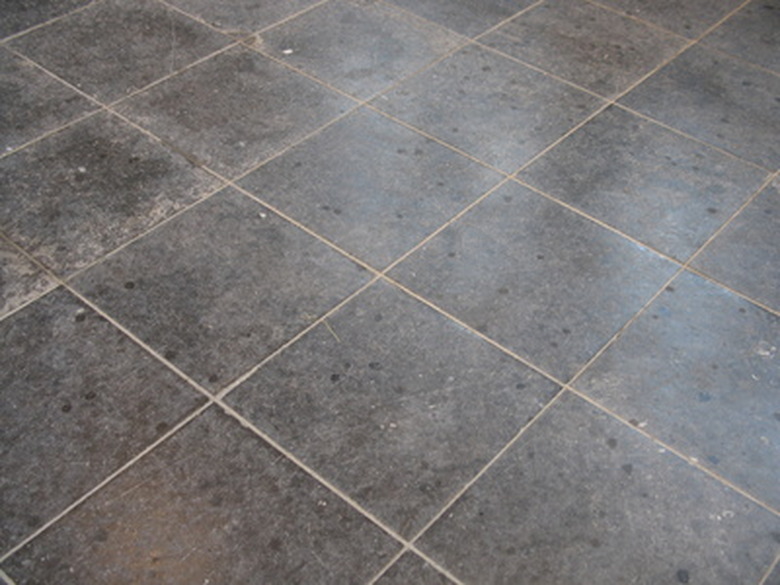How To Use Leveling Compound On Plywood
Things Needed
-
Leveling compound
-
Latex primer
-
Caulk or wood crack filler
-
Paint rollers
-
Brushes
-
Bucket
-
Electric power drill with mixing hook or paddle attachment
-
Shovel
-
Hand trowel
-
Palm sander, sandpaper
-
Level or straight edge
-
Power drill with mixing hook attachment
-
Shovel and trowel
-
General purpose dust mask
-
Safety goggles
-
Mop
-
Buckets
Used by professional contractors and DIY enthusiasts alike, commercially available leveling compounds provide solutions to common problems encountered in flooring projects. These compounds are used to level out low areas in plywood substrates in preparation for laminate, wood or tile flooring installation. Self leveling compounds are simple to prepare and use, and are available in many formulations to meet a variety of flooring needs.
Plywood Surface Preparation
Step 1
Sweep any debris from the plywood surface or subfloor. Fill any cracks or holes in the plywood sheeting with a crack filler or caulking compound designed for use with plywood. Allow to dry and lightly sand for an even and flat surface.
Step 2
Use a damp mop to remove remaining dust or particles that will interfere with adhesion and allow the surface to dry completely.
Step 3
Apply a latex floor primer to the entire plywood surface using a paint roller. Use a brush for application in smaller areas. Thoroughly cover all areas with one coat of primer to enhance adhesion of the leveling compound to the plywood surface. Allow the primer to dry thoroughly.
Step 4
Locate low areas on the plywood surface by moving a level or long straight edge tool along the flooring surface. Outline all uneven areas in pencil to use as a guide for the leveling compound application.
Leveling Compound Preparation and Application
Step 1
Collect all mixing and application tools prior to preparing the leveling compound mixture. Self leveling compounds set up quickly and most formulations cannot be reused or re-tempered by the addition of more liquid.
Step 2
Pour the leveling compound into a clean bucket and add cold water gradually to the compound powder while mixing. The liquid-to-compound proportions vary between brand formulations so follow these directions exactly for the product selected and add no more liquid than recommended. Prepare only as much material as can be applied in 10 to 20 minutes.
Step 3
Mix the leveling compound and liquid for two to three minutes. Use an electric power drill and mixing hook or paddle attachment to thoroughly incorporate the leveling compound and liquid and also to speed the mixing time. Scrape the bottom and side edges of the bucket during mixing to ensure that all of the compound material is incorporated into the liquid. When adequately mixed, the consistency of most water-based leveling mixtures will be slurry-like. Look for a pancake-batter consistency that is easily pourable without being too runny.
Step 4
Pour the leveling compound onto the designated areas. Spread the mixture with a shovel after pouring, working quickly and feathering the edges of the compound flat to the plywood surface using a hand trowel. Follow product guidelines for the maximum installation depth of the leveling compound to avoid cracking and improper curing.
Step 5
Allow the leveling compound to dry completely, usually twelve to twenty-four hours, before installing any additional surfacing materials.
Tip
For additional waterproofing protection, use a wood sealer or conditioner before applying primer to the plywood surface if this is recommended for your leveling product. Use the longest straight-edged tool that you can reasonably maneuver along the plywood surface in order to accurately determine the parameters of the low or uneven areas for filling. Use very cold water for leveling compound mixing to increase the amount of working time available before the leveling compound begins to cure and dry.
Warning
Use a dust mask and safety goggles to limit the exposure to airborne particulates. Wash buckets and tools immediately with water after compound application to remove any leveling compound residue before it has had a chance to cure and dry.
